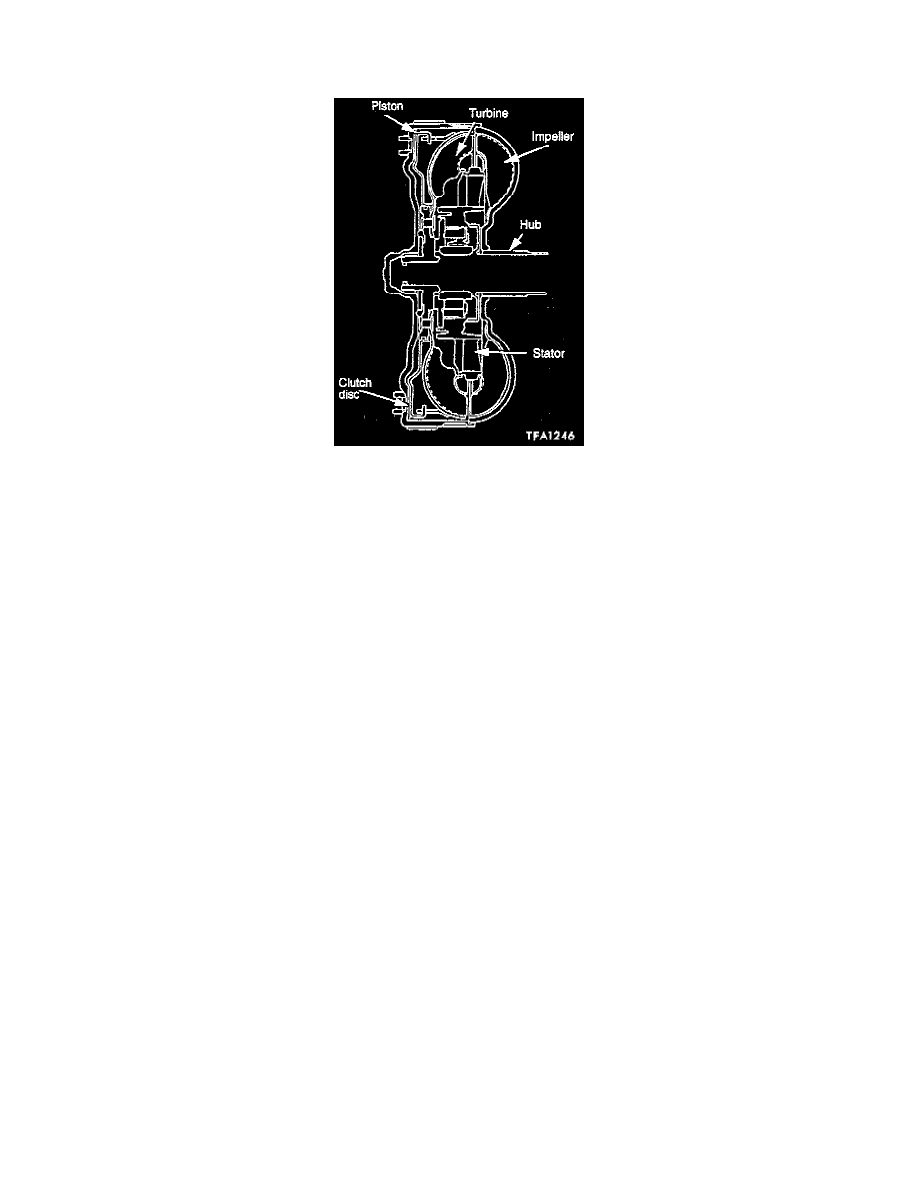Sebring V6-2.5L VIN N (1997)

Torque Converter: Testing and Inspection
Stall Test
WARNING: When performing a stall test, always apply both-the service brakes and parking brake. Also, do not let anyone stand in front of
the vehicle during testing.
NOTE:
-
The torque converter stall test is used primarily to determine stator overrunning clutch operation.
-
Use the scan tool and a tachometer to do the stall test.
-
Determine engine rpm with the transaxle in drive, engine at wide open throttle, and vehicle stationary.
-
To keep the vehicle stationary and to avoid creeping or lurching forward, apply both the service brakes and the parking brake.
-
Avoid keeping the throttle open for more than 5 seconds at a time. Allow the transmission fluid to cool between stall tests by placing the transaxle
in neutral, raising the engine rpm slightly for approximately 20 seconds.
Torque Converter Stator Clutch Failure
One type of stator over-running clutch failure is a slipping clutch. With this type of failure, the vehicle will exhibit normal transaxle operation at
highway speeds but will have poor acceleration.
Another type of stator over-running clutch failure is a seized clutch.
With this type of failure, the vehicle acceleration may be acceptable but a high throttle is required to maintain vehicle speed.
The vehicle may seem like it has a loss of power.
With either type of failure, poor fuel economy and transaxle fluid over-hearting may be the result.
Stall Speed Above Specification
If the stall speed exceeds 2,440 rpm by more than 200 rpm, a clutch is slipping.
Diagnose the clutch circuits by performing hydraulic and air pressure tests.
The clutches of the F4AC1 transaxles may also be checked using information given through the input and output speed sensors to the Transaxle
Control Module (TCM).
Stall Speed Below Specification
If stall speed is 250-350 rpm below specification, the stator over-running clutch is slipping. During the road test, if poor acceleration occurs
through the gears with normal transaxle operation at highway speeds, the vehicle has a slipping stator clutch.
Normal Stall Speed And Acceleration
If stall speed and acceleration appear normal, but it takes excessively high throttle opening to maintain vehicle speed, the starter's over-running
clutch is seized.
This will impede the flow of fluid within the torque converter, causing excessive use of power from the engine for cruising.
Converter Noise
While performing the stall test, listen for abnormal noise coming from the converter area.
A whining noise due to fluid flow within the converter is considered normal.
Loud metallic noises coming from the converter indicate loose parts or internal damage. Remove the inspection cover from the bellhousing area
and check for a cracked torque converter flex plate or its bolts.
If the flex plate and bolts are oil, and there is still noise coming from the torque converter, the torque converter may be defective and must be
